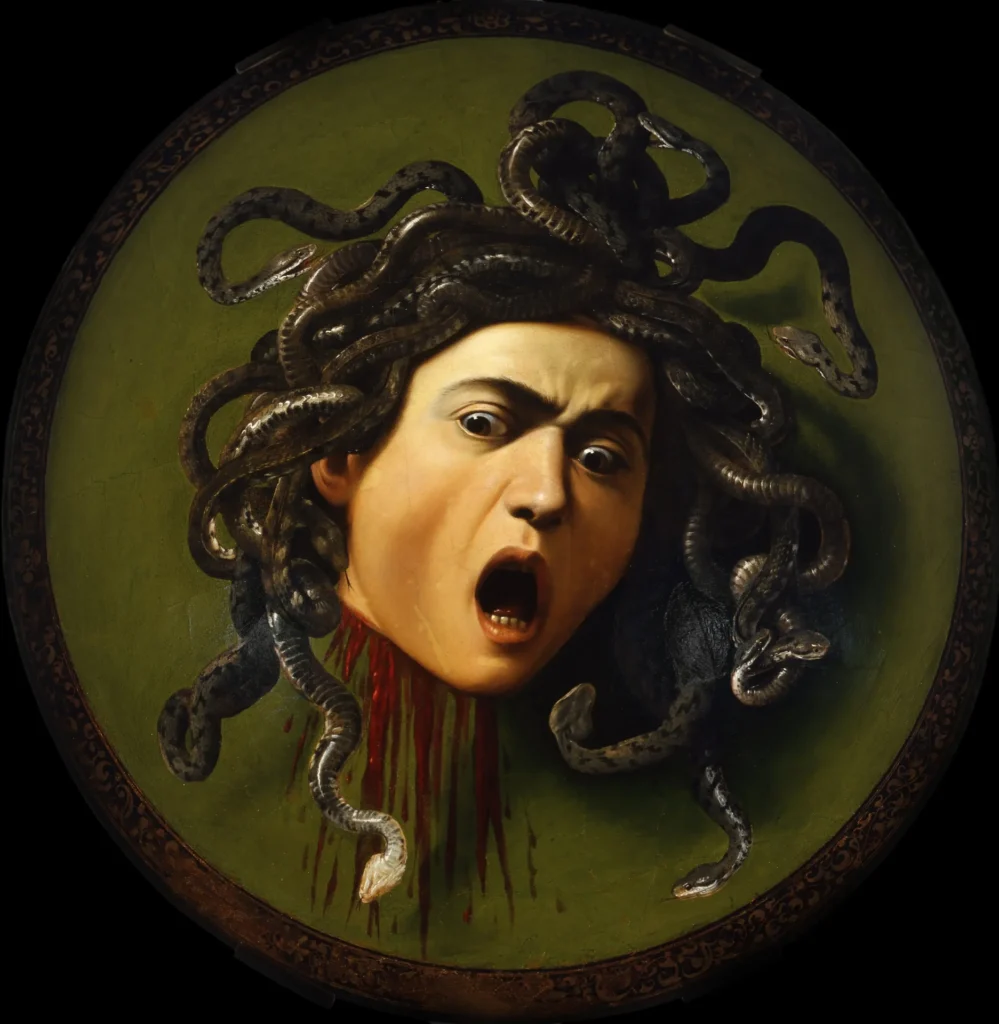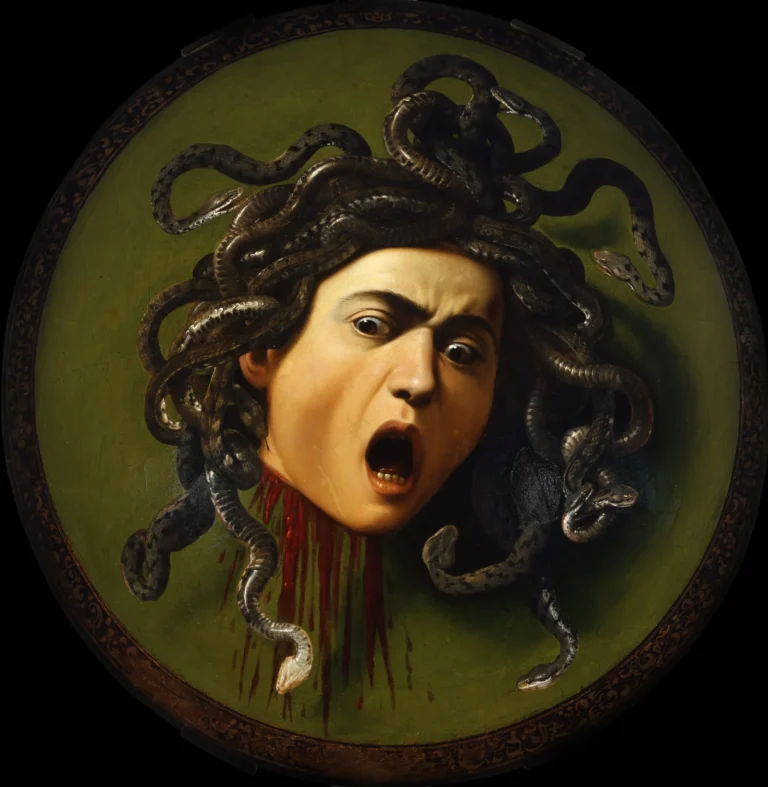Medusa (1597-1598)
Created between 1597 and 1598, Caravaggio's Medusa is a distinctive Baroque masterpiece painted on a convex wooden shield. It vividly captures the mythological moment of Medusa’s decapitation by Perseus, showcasing her terror and agony. The painting is renowned for its chiaroscuro technique, which brings a dramatic realism to the scene. This work not only reflects Caravaggio’s innovative style but also serves as a commentary on mortality, as he depicted himself as Medusa, adding an intimate layer to this powerful image.
1597 - 1598
About the Artwork
Medusa was commissioned by Cardinal Francesco Maria del Monte as a gift for the Grand Duke Ferdinand I de' Medici, representing the duke's courage in overcoming his foes. Caravaggio’s choice to paint on a convex shield adds depth to the experience of viewing the piece, mirroring the mythological narrative where Medusa's head retains consciousness even after her death. In portraying himself as Medusa, Caravaggio invites viewers to explore themes of identity and mortality. The emotional intensity and technical mastery of this painting position it as a pivotal piece in art history, showcasing the artist's influence on the Baroque movement.
Did You Know
Liked what you see? Add it to your collection.
Enjoyed reading? Share it.
... continued
Commission and Patronage
The painting was commissioned by Cardinal Francesco Maria del Monte, who was an agent of the Medici family in Rome. It was intended as a gift for Ferdinand I de' Medici, the Grand Duke of Tuscany, symbolizing the Grand Duke's courage in defeating his enemies.
Technique and Medium
Caravaggio painted Medusa on a circular, convex wooden shield, which was a unique choice that ties into the mythological story of Medusa. This convex surface creates a dynamic effect where different elements of the painting are accentuated or hidden depending on the viewer's position.
Mythological Context
The painting draws on the Greek myth of Medusa, one of the three Gorgon sisters with snakes for hair and a gaze that could turn people to stone. Caravaggio depicts the moment just after Medusa's decapitation by Perseus, showing her head still conscious and in agony.
Artistic Innovations
Caravaggio employed his characteristic use of chiaroscuro, creating strong contrasts between light and shadows to give the head of Medusa a three-dimensional appearance. The painting's realism, particularly in the depiction of the snakes and Medusa's facial expression, adds to its dramatic impact.
Self-Portrait Element
Notably, Caravaggio used his own face as the model for Medusa's, which adds a layer of personal and symbolic meaning to the work. This self-portrait element can be seen as a meditation on the artist's own mortality and the power of art to capture and freeze moments in time.
Expression and Emotional Impact
Medusa's face is captured in a moment of intense pain and horror, with her mouth open in a silent scream and her eyes wide with terror. Despite her fearsome mythological status, Caravaggio's depiction makes her appear more human and terrified rather than terrifying.
Historical Significance
Medusa is now housed in the Uffizi Museum in Florence and is one of Caravaggio's most famous works. It reflects his influence on the development of Baroque art and his innovative techniques that shaped the course of art history.










